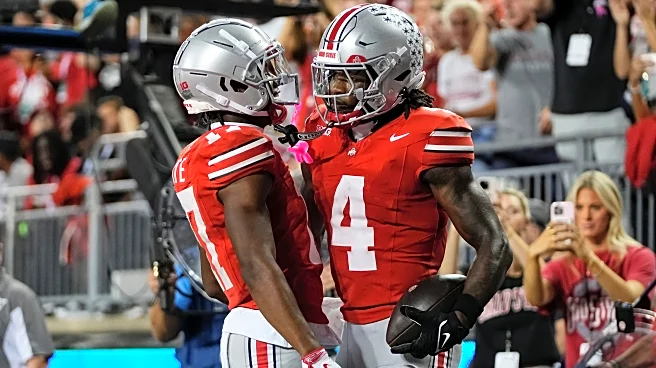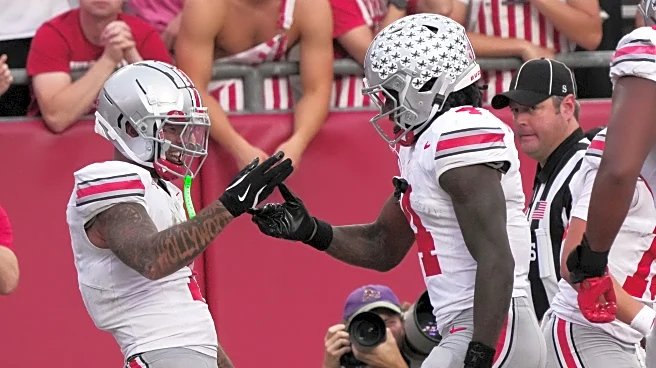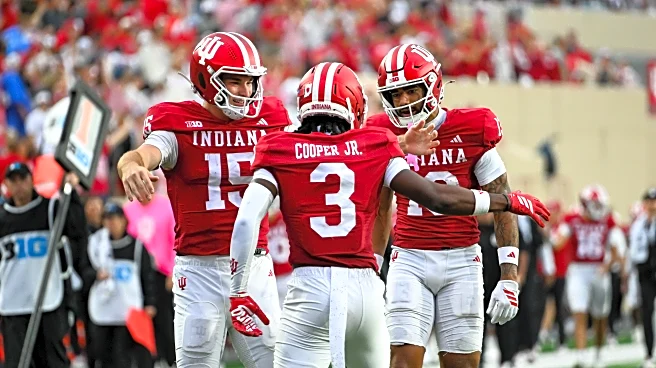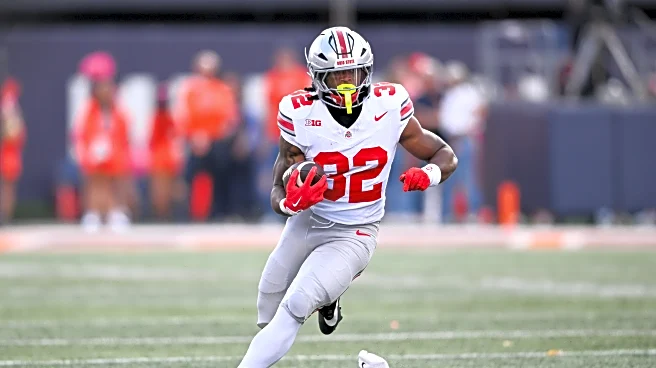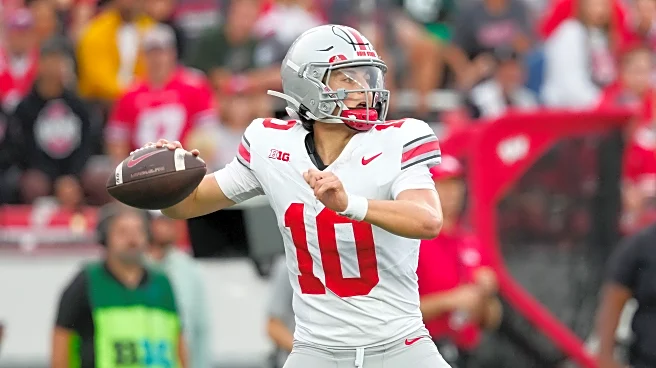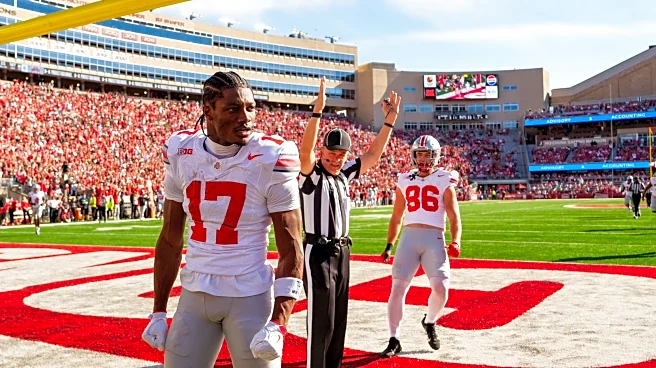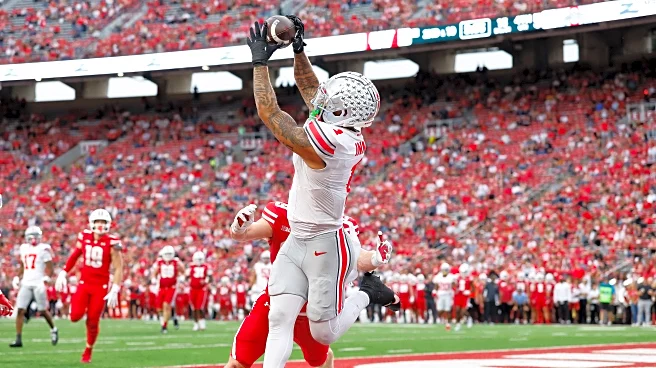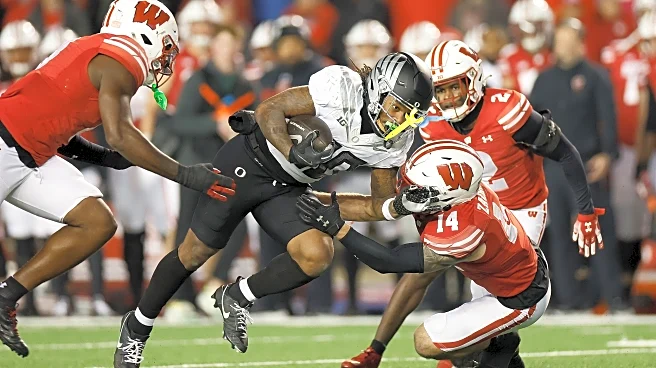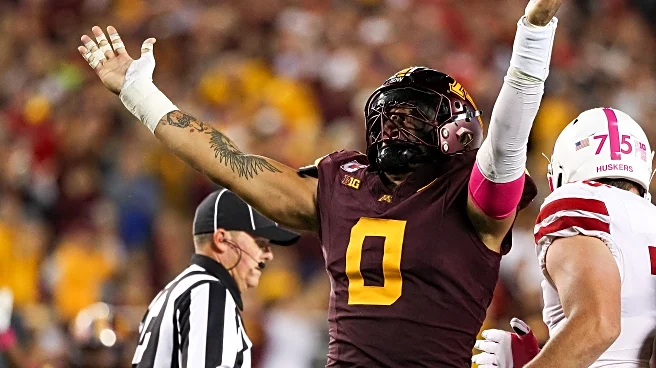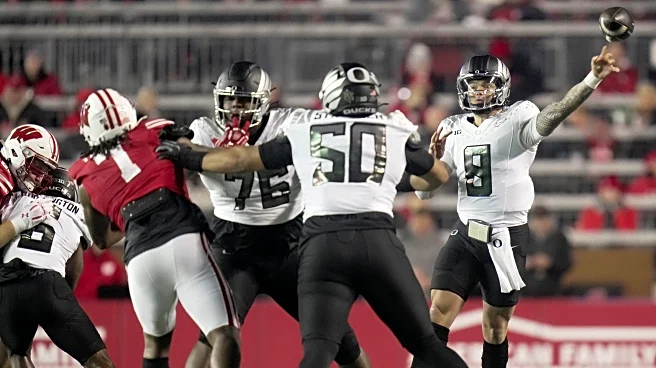The dilemma for opposing defensive coordinators is clear the moment Ohio State lines up. Two elite receivers, one impossible choice.
Jeremiah Smith continues to be the steady, dominant presence every defense
must account for, while Carnell Tate’s rise into full-fledged WR1 form has made double coverage a losing game.
The ripple effect can be seen everywhere. Wider rushing lanes for Bo Jackson, more freedom for Max Klare underneath, and an offense that dictates coverage rather than reacting to it. Here’s how this two-headed threat bends defensive structures, and why Ohio State keeps cashing in.

A. The landscape: Smith and Tate at full force
Smith’s season stat line through mid-October, 49 catches for 602 yards and 7 touchdowns over 7 games. Tate, meanwhile, has 34 catches for 587 yards and 6 touchdowns in the same span. Against Wisconsin (Oct. 18), Tate logged 6 catches for 111 yards and 2 TDs, while Smith had 9 catches for 97 yards, both playing 49 and 57 snaps respectively.
That level of sustained production from both sides of the formation means offenses can spread the field, and defenses can’t shift coverage without leaving someone else open.
B. Forcing coverage conflicts: man vs. zone and bracket decisions
1. Man coverage problem
When a defense opts for man-to-man against Smith (as was often the case last year), Tate feasts. Minnesota elected man and bracketed Smith, and Tate responded with 183 yards on 9 catches.
Defenses cannot commit two-high safeties and send a man-coverage bracket without giving up favorable matchups on the opposite side.
2. Zone dilemma
In zone coverages, Smith thrives in the intermediate seams and curl/flat leverage, while Tate is turning into a deep-threat vertical splitter. With both on the field, the buckeyes can run play-action, get eight-man boxes and then stretch vertically because two elite threats demand attention.
3. Bracket choices
If you bracket Smith, you open Tate. If you bracket Tate, you open Smith, and either way you risk a tight end (Klare) or Jackson leaking out underneath. This “pick your poison” problem forces help-safety or bracket rotation, which opens up space over the top or on the boundary.
C. Tactical fallout: How it opens the rest of the offense
Run game advantages: With defenses stressed over perimeter threats, Ohio State’s running backs see lighter boxes. In the Wisconsin win, although Jackson’s rushing output was modest due to game script, he had 5 catches for 57 yards, showing that even when the run game struggled, Jackson’s presence in the passing game mattered.
Tight-End leverage: Max Klare benefits when defenses allocate extra bracket resources to the wideouts. Against Minnesota, Klare had 5 catches for 63 yards. In coverage snaps, when safeties are occupied with Smith and Tate, Klare finds soft zones or seams.
Spacing & tempo: With defenders stretched horizontally and vertically, Ohio State can run more tempo, more shallow-cross patterns, and unscheduled motion. That keeps defenses in conflict rather than comfortable.
D. Why this duo elevates Ohio State from contender to national-title threat
Few teams in college football boast one elite receiver generating targets and forcing defensive change. Ohio State runs two on the field simultaneously. Many opponents can defend one, but defending two elite threats on opposite sides undermines the margin for coverage error.
Add a strong tight-end presence (Klare), a backfield threat (Jackson), and a QB in Sayin who is completing 80+% of his throws with 10.4 yards per attempt through the first seven games. When your offense can stress defenses horizontally and vertically and flourish in play-action, that’s how you become elite.
Bottom line
Jeremiah Smith and Carnell Tate aren’t just sharing targets, they’re creating strategic stress for every defense they face. That stress opens up everything else, the run game, the tight-end seams, and play-action opportunities. If defenses have to dedicate resources to both, Ohio State wins in more ways than one.
The Buckeyes’ offense isn’t simply good, with this duo, it’s multiple threats in one package and that’s the kind of imbalance you need to win the biggest games.
